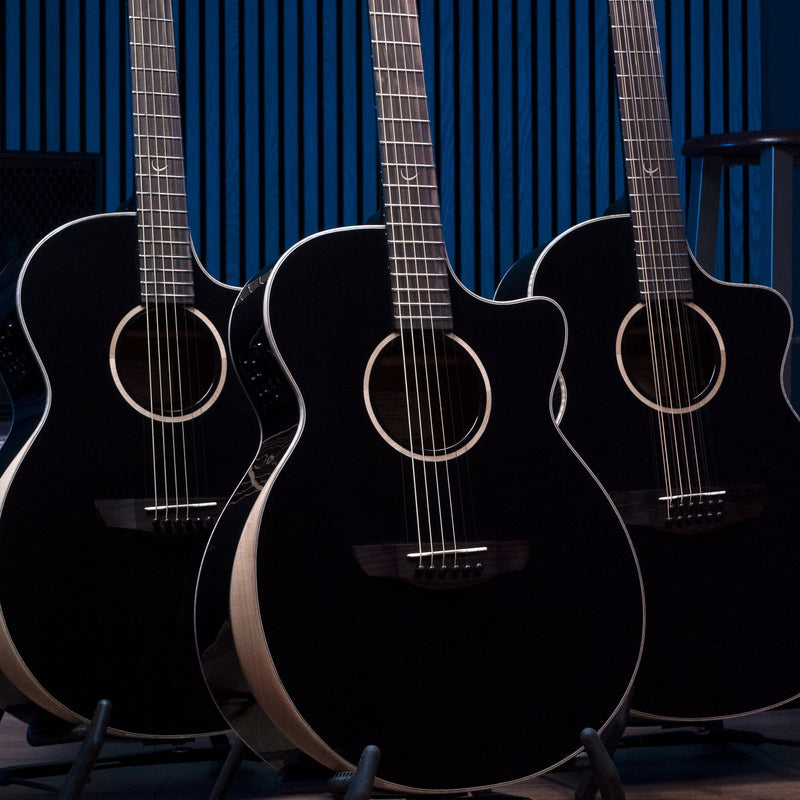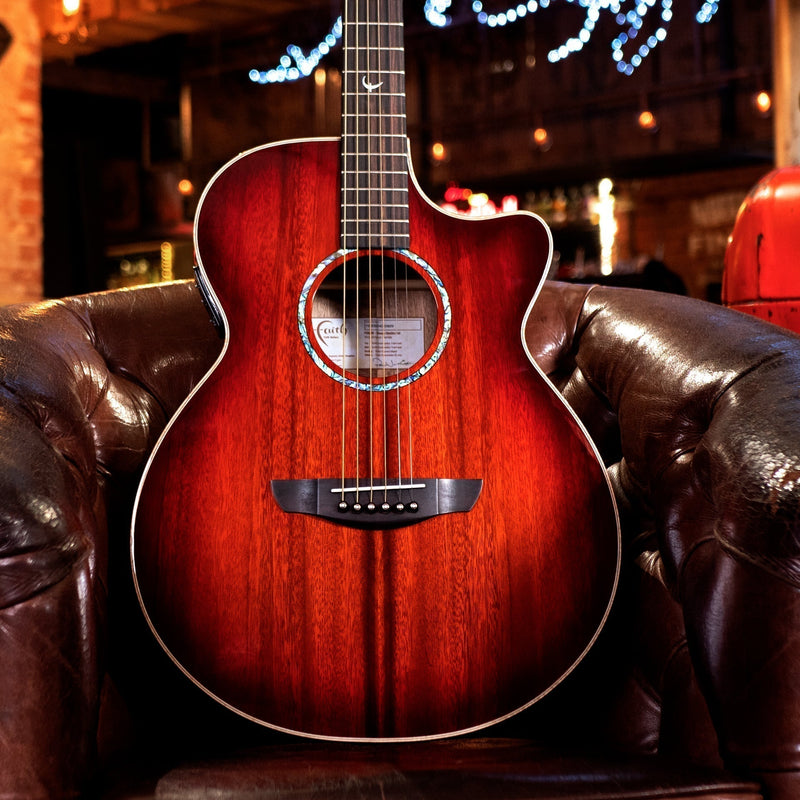Acoustic Guitar buying guide
 So you want an acoustic guitar? That's great news! The world becomes a better place every time an acoustic guitar finds a home.
So you want an acoustic guitar? That's great news! The world becomes a better place every time an acoustic guitar finds a home.
There are numerous things to think about when looking for a new guitar, but we're going to focus on just one: What your guitar is made of. You'll hopefully come to understand why we have chosen to focus on this first, as pretty much everything else is secondary.
So, Acoustic Guitars have a special place in the world. They're at home in countless locations and relevant in every conceivable musical genre, and it can lay claim to a spot as one of most influential musical tools of the last 100 years.
As the names suggests, these are guitars that rely solely on an solid wooden box to produce both a wide range of tones and varying levels of sound projection, or volume. You can get acoustic guitars in their traditional form, or with electronics fitted to them: Electro-Acoustic as we call them in the UK, or Acoustic-Electric as they're known in the USA. We'll cover this topic in another post though, so lets stay on track.
Faith Acoustics are made in our Indonesian workshops, with whom we have worked for decades, and they're made of only solid tonewood. This is a difference that we tend to mention over and over, but for good reason.

The Top of your Acoustic Guitar
The most important part of an acoustic guitar is the top. This is the part that shapes the instrument's primary voice and also determines projection and therefore volume.
So having a top (or soundtable!) made from good stuff is incredibly important. Naturally, Faith Guitars have all-solid tonewood tops, which means that the top of your acoustic will be one solid piece of Spruce, Cedar, Mahogany or Trembesi. The single piece would have been sawn through the centre, long-ways, and opened like a book to create what is called a 'book-matched' top. That's why the wood grain looks more or less symmetrical... and as it’s a single piece of wood, from the same tree, from the same period of growth, it can move and resonate as a single unit. And that's why it’s important.
Lower-grade guitars with Laminate tops, often use a plywood top (made of different types of wood, dust and glue) with pretty veneers on top. Although functional, it means that the most important part of the guitar is incongruent: It can't move or resonate as a single unit, as one type of wood will move differently to another, and glue and dust just get in the way. It will work, but just not as well as it could.
But, the best thing is, a solid wood top will get better over time. As the wood is shaken by the natural resonance of the instrument, the tiny fibres gradually find their natural resting place and gradually become more tightly knitted together, further improving and refining your instrument’s unique voice. Therefore a 20year old guitar will have been ‘played-in’ nicely, which is to say that the wood fibres have ceased to move about so much, as they have found their ideal positions, which in turn means the guitar top can act even more strongly as one single resonant piece.
Although the top is arguably the most important part of an Acoustic Guitar, the back and sides play an essential role too, and add the extra layer of character that sets one apart from the next.

The Back and Sides
Once again, Faith Guitars have this covered, as we also use all-solid timbers on the back and sides of all our guitars (except Apollo Series). The above logic applies when understanding the benefits of solid tonewood back and sides: a single piece of solid wood can move as one unit, whereas laminates with veneers on top will not.
But where things get really interesting is the difference that the choice of tonewood on the back and sides makes to the overall sonic character of each guitar.
Rosewood will deliver brilliant highs and rich bass; Mahogany will be stronger on the mid-ranges; and Trembesi sits nicely in the middle of the two.
So which guitar will fit my needs
Although there is received wisdom about which woods are best for certain applications, there are no actual rules, and that’s the fun of it. You can try a great range of guitars with combinations of Top wood and Body wood, until you find the one that ‘speaks’ to you. Just because Rosewood is historically favoured by Fingerstyle players, that doesn’t necessarily mean it will be the best for your new composition… although it may. But until you try it, you just won’t know!
Go and try some out in your local store. It'll be fun, as I think we can all agree that very few days are as fun as ‘a new guitar day’!
Related Posts

Discover the new upgraded Eclipse Series!
Faith Guitars is delighted to announce the release of upgraded models in its much-loved Eclipse Series. Designed as the ultimate "stage...
16th December 2024

Why choose Faith Blood Moon
Our award-winning Blood Moon guitars caused a real stir when first released, and continue to this day. They are strikingly...
12th December 2024